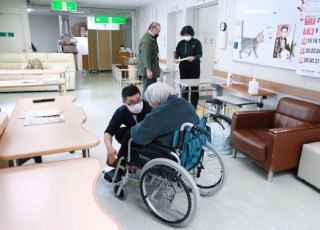Loading
Search
▼ Over 80 Nursing Homes In Japan Went Bankrupt In First Half
- Category:Other
A severe labor shortage and rising prices are weighing heavily on Japan's nursing care providers, with 81 nursing homes going bankrupt over the past six months, a Tokyo-based research center has said.
This is the highest number recorded for the first half of the year since the nursing care insurance system started in 2000. It also marked a 50% increase from the same period of last year, Tokyo Shoko Research said.
Previously, the highest number of bankruptcies recorded was 58 in 2020 during the COVID-19 pandemic.
Compared with the first half of last year, there were 27 more nursing care providers with liabilities exceeding ¥10 million ($62,000) that went bankrupt this year, according to the research company.
Poor sales performance was the main factor behind 64 of the bankruptcies, which accounted for around 80% of the total.
One persistent challenge the nursing industry faces is replenishing its aging labor force with new hires, the research company said.
The issue of low pay was addressed somewhat after the health ministry decided to raise nursing care fees by 1.59% from this fiscal year, but wage increases in other industries have made the nursing care industry less attractive.
By service type, 40 bankruptcies were related to home care, 25 were related to day care and short-term stays, and nine related to elderly care homes.
Competition in the nursing care industry has intensified in recent years amid an increasing number of operators. For instance, Nippon Life Insurance made a foray into the sector via its acquisition of Nichii Holdings.
There has been a steady increase in new nursing care companies in the last five years.
By number of employees, there were 47 companies with fewer than five employees that went bankrupt, accounting for 60% of the total, indicating that small and micro-enterprises were predominant. By region, the Kanto area showed the highest number of bankruptcies at 25, with Kinki coming in second with 19, followed by 11 in Kyushu.
“With the outlook for resolving labor shortages and rising prices remaining uncertain, the number of bankruptcies among nursing care providers is likely to keep increasing for the time being,” Tokyo Shoko Research said.
This is the highest number recorded for the first half of the year since the nursing care insurance system started in 2000. It also marked a 50% increase from the same period of last year, Tokyo Shoko Research said.
Previously, the highest number of bankruptcies recorded was 58 in 2020 during the COVID-19 pandemic.
Compared with the first half of last year, there were 27 more nursing care providers with liabilities exceeding ¥10 million ($62,000) that went bankrupt this year, according to the research company.
Poor sales performance was the main factor behind 64 of the bankruptcies, which accounted for around 80% of the total.
One persistent challenge the nursing industry faces is replenishing its aging labor force with new hires, the research company said.
The issue of low pay was addressed somewhat after the health ministry decided to raise nursing care fees by 1.59% from this fiscal year, but wage increases in other industries have made the nursing care industry less attractive.
By service type, 40 bankruptcies were related to home care, 25 were related to day care and short-term stays, and nine related to elderly care homes.
Competition in the nursing care industry has intensified in recent years amid an increasing number of operators. For instance, Nippon Life Insurance made a foray into the sector via its acquisition of Nichii Holdings.
There has been a steady increase in new nursing care companies in the last five years.
By number of employees, there were 47 companies with fewer than five employees that went bankrupt, accounting for 60% of the total, indicating that small and micro-enterprises were predominant. By region, the Kanto area showed the highest number of bankruptcies at 25, with Kinki coming in second with 19, followed by 11 in Kyushu.
“With the outlook for resolving labor shortages and rising prices remaining uncertain, the number of bankruptcies among nursing care providers is likely to keep increasing for the time being,” Tokyo Shoko Research said.
- July 4, 2024
- Comment (0)
- Trackback(0)


